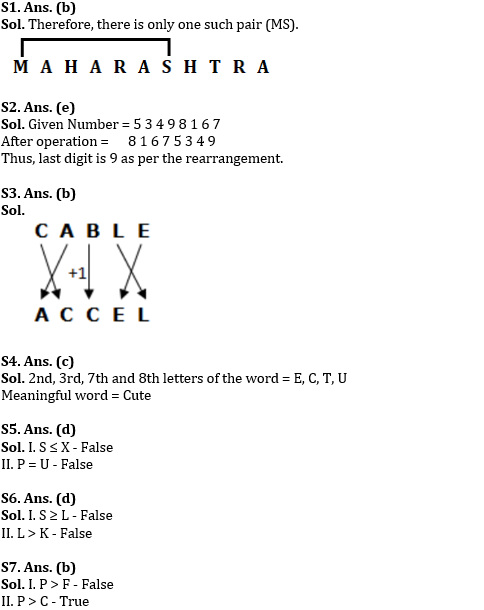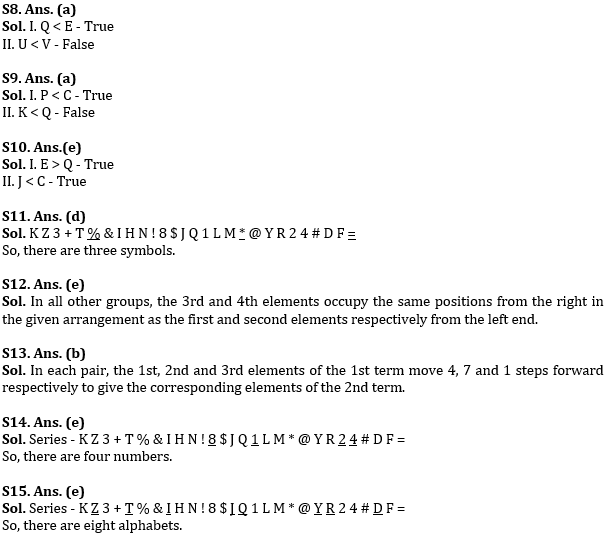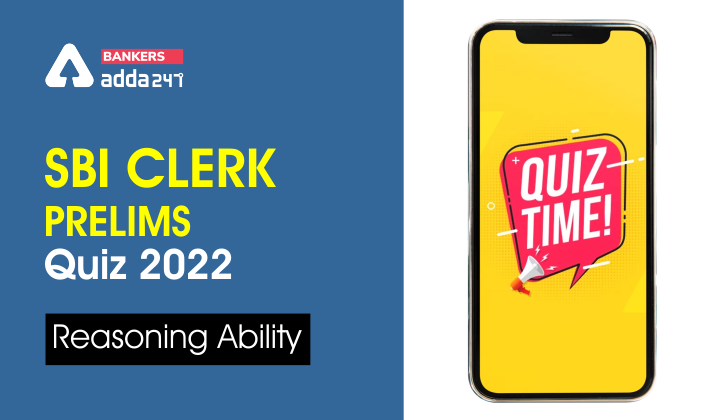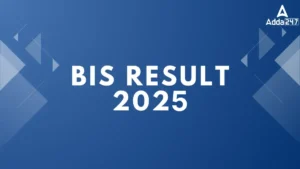Q1. How many such pairs of letters are there in the word ‘MAHARASHTRA’ each of which has as many letters between them in the word as in the English alphabet (Both forward and backward direction)?
(a) None
(b) One
(c) Two
(d) Three
(e) More than three
Q2. The positions of the first and the fifth digits in the number 53498167 are interchanged. Similarly, the positions of the second and the sixth digits are interchanged and so on. Which of the following will be the last digit after the rearrangement?
(a) 7
(b) 5
(c) 3
(d) 4
(e) None of these
Q3. In a particular code language, ‘CLAIM’ is coded as ‘LCBMI’, so how will ‘CABLE’ be coded in the same code language?
(a) ECCAL
(b) ACCEL
(c) CCALE
(d) LECCA
(e) None of the above
Q4. How many meaningful word/words can be formed using second, third, seventh and eighth letters of the word RECAPITULATE using each letter only once in each word?
(a) None
(b) One
(c) Two
(d) Three
(e) None of these
Directions (5-10): In each of the following questions, assuming the given statements to be true, find which of the following options holds true:
Q5. Statements: P = X ≥ W > Y, S ≤ T < P, Y = U
Conclusions:
I. S ≤ X
II. P = U
(a) Only I is true
(b) Only II is true
(c) Either I or II is true
(d) Neither I nor II is true
(e) Both I and II are true
Q6. Statements: S ≥ Q, P < K, Q ≤ L, P = L
Conclusions:
I. S ≥ L
II. L > K
(a) Only I is true
(b) Only II is true
(c) Either I or II is true
(d) Neither I nor II is true
(e) Both I and II are true
Q7. Statements: F ≥ T, A ≤ C, P ≥ T, T > C
Conclusions:
I. P > F
II. P > C
(a) Only I is true
(b) Only II is true
(c) Either I or II is true
(d) Neither I nor II is true
(e) Both I and II are true
Q8. Statements: J ≤ K, U > Q < T, E ≥ U, E = V
Conclusions:
I. Q < E
II. U < V
(a) Only I is true
(b) Only II is true
(c) Either I or II is true
(d) Neither I nor II is true
(e) Both I and II are true
Q9. Statements: Q ≥ S, S < K, C = K, P < S
Conclusions:
I. P < C
II. K < Q
(a) Only I is true
(b) Only II is true
(c) Either I or II is true
(d) Neither I nor II is true
(e) Both I and II are true
Q10. Statements: J < H = F, C ≥ E > F, J > L ≥ Q
Conclusions:
I. E > Q
II. J < C
(a) Only I is true
(b) Only II is true
(c) Either I or II is true
(d) Neither I nor II is true
(e) Both I and II are true
Directions (11-15): Read the following arrangement carefully to answer the following questions.
K Z 3 + T % & I H N ! 8 $ J Q 1 L M * @ Y R 2 4 # D F =
Q11. How many such symbols are there in the above arrangement each of which is either immediately followed by a number or immediately preceded by a letter, but not both?
(a) None
(b) One
(c) Two
(d) Three
(e) More than three
Q12. Four of the following five are alike in a certain way. Which one does not belong to the group?
(a) 3 Z D F
(b) % T 2 4
(c) K T = 4
(d) % I 2 Y
(e) + # @ Q
Q13. If 3 Z T is related to & H % in the same way, Q J L is to ____?
(a) Y R *
(b) * Y M
(c) @ * R
(d) @ Y L
(e) None of these
Q14. How many such numbers are there, each of which is either immediately followed by a symbol or immediately preceded by a letter, but not both?
(a) None
(b) One
(c) Two
(d) Three
(e) More than three
Q15. How many such letters are there, each of which is either immediately followed by a number or immediately preceded by a symbol but not both?
(a) None
(b) One
(c) Two
(d) Three
(e) More than three
Solutions







 GA Capsule for SBI Clerk Mains 2025, Dow...
GA Capsule for SBI Clerk Mains 2025, Dow...
 The Hindu Review October 2022: Download ...
The Hindu Review October 2022: Download ...
 BIS Result 2024-25 Out for ASO, JSA and ...
BIS Result 2024-25 Out for ASO, JSA and ...





